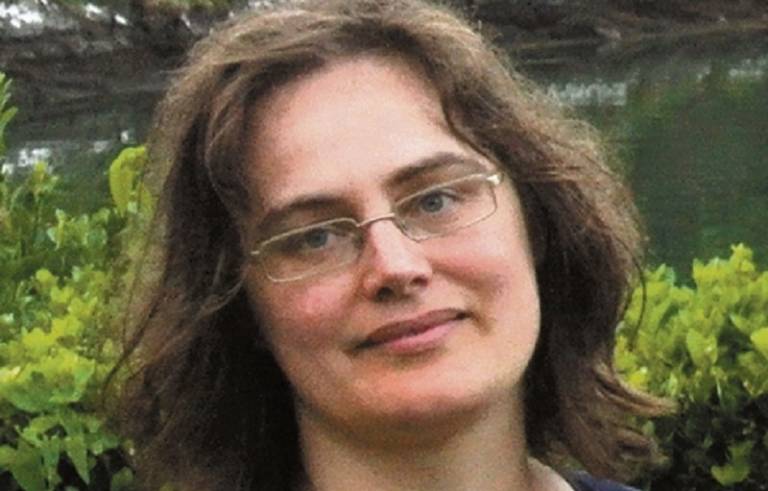10 Questions with Slaney Devlin
30 January 2018
The air quality activist and community organiser talks about invisible rabbits, Tristram Shandy, and neighbourhood planning

What is your organisation and what are its key aims?
Somers Town Neighbourhood Forum is the organisation designated to prepare a neighbourhood plan for Somers Town – the area directly north of the Euston Road, between Euston and St Pancras stations. Our key aim is to plan for sustainable development that recognises the existing community living in Somers Town and allows it to thrive.
What is your experience with community-engaged research?
We are both blessed and cursed by community-engaged research. Blessed, because we are in central London, in the heart of the Knowledge Quarter, so we get frequent opportunities to work with talented and interesting academic researchers. Cursed, because sometimes projects can be a distraction from our purpose.
What are you most proud of, in work or in life?
My children.
What saying do you try to live by?
No man is an island.
If you could meet any person, at any point in history, who would you choose and why?
In general, I don’t think it’s a good idea to tamper with timelines, but I would be tempted to whisper in the ears of Michael Collins and David Lloyd George that the Anglo-Irish Treaty needed more work.
Which album, film, TV boxed set and book would you take on a desert island?
Album: If a peaceful island I’d go classical with Beethoven’s late string quartets.
Film: Harvey (1950) with James Stewart and a six-foot, three-and-a-half-inch tall invisible rabbit.
TV box set: Maybe the first few seasons of The Simpsons.
Book: A desert island would be a good place to get to grips with Laurence Sterne’s The Life and Opinions of Tristram Shandy, Gentleman. If I don’t get on with it, it’ll be useful for starting fires!
What do you think is the most important quality in a friend and/or colleague?
Honesty.
What do you like best about where you live?
It’s great living in Zone 1, with amazing things to see and do constantly on our doorstep, but the thing I like best about Somers Town is the people. There’s a real community here and it’s great to know when you go out of your door you’re bound to bump in to one of your friends.
If you could be Mayor of London for a day, what would you do?
I would have a conference call with HM Treasury, the Department for Transport, HS2, Crossrail 2, Network Rail, TfL and Camden Council and insist that they came up with a unified scheme for Euston Station that does not increase the station footprint and improves the local environment. There is an opportunity to heal the appalling damage done to the Euston communities in the 1960s and 1970s with the building of the existing station. Instead, we are looking at a further sprawl of station buildings, fewer parks and trees, poorer air quality, taller buildings, more noise, less light. It is unbearable to watch our community being further insulted by a political failure to properly fund and plan an integrated station at Euston.
What opportunities for community-engaged research are coming up for you or your organisation?
Air quality in our area is very poor, with illegal levels of nitrogen dioxide and unacceptable levels of particulates. UCL's Engineering Exchange are working with the community to help inform our neighbourhood policy on air quality and to identify and enable specific actions that would improve the situation.
We are also currently working with UCL (Professor Jane Holder), Voluntary Action Camden and the Environmental Law Foundation to produce a report on the Environmental Justice Inquiry evidence given during meetings in the Euston area in September and October 2017.
A burst water main caused life-threatening floods in Somers Town in November. We are hoping to do a piece of work with UCL in the new year on a sustainable drainage strategy.
And finally, we are looking at a project that would engage the people of Somers Town in the recording of our built heritage, and particularly our social housing.
 Close
Close

